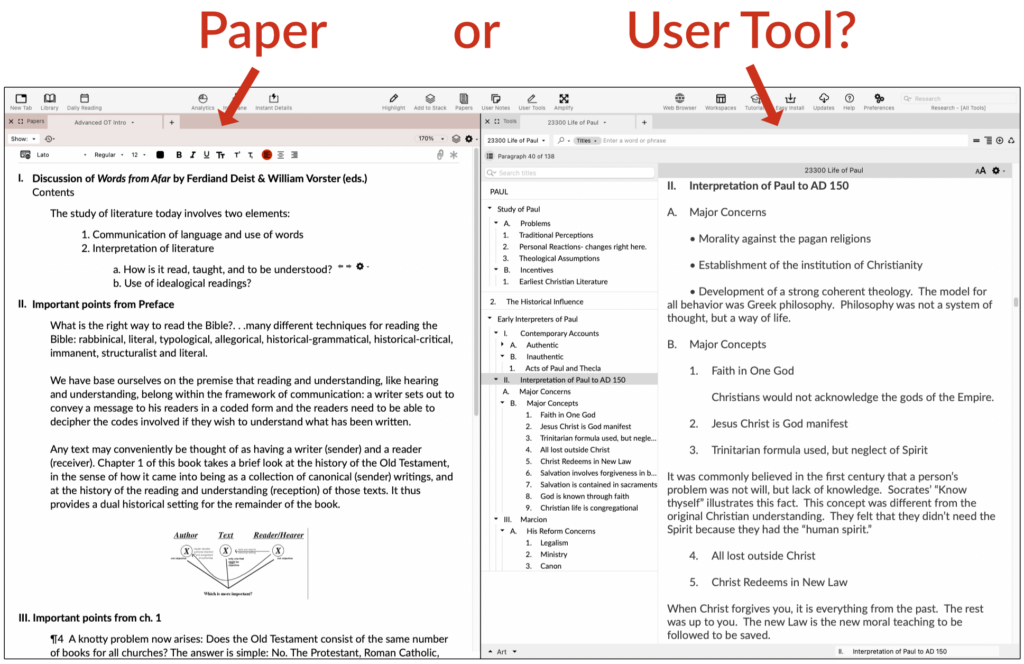Note: This blog post continues in the revision of the Seven Strategies for Students series, bringing helpful ideas and tips up to date with the latest features in Accordance.
When I began my M.Div classes in the early ’90s, laptops were a luxury most of us could not afford, and professional-grade Bible software like Accordance was non-existent (Accordance 1.0 was released in 1994). In class, I took my notes by hand with pencil and paper. Then, I went home and transcribed them onto my desktop computer in Microsoft Word. Although this repetitive method was actually a good way to reinforce what we had covered in class, it was also very time consuming.
Paper or User Tool?
Accordance offers two different methods for creating documents: Paper and User Tool. Both methods have their distinct advantages. Create a User Tool for content that should be included in Research (search all) or if you want to create a running table of contents. Create a Paper for more highly structured documents, especially if footnotes are needed and you plan to print out the content.
Advantages of taking class notes in Accordance
Having your class notes integrated into the same software you use for your research and studies has many benefits. Here are just a few.
- Documents created in Accordance are fully editable on the fly. With each new class session, open the class notes User Tool or Paper document and pick up where you left off in the previous class.
- Since you’re already in Accordance, take advantage of quick access for copying content from the Bible, whether in Greek, Hebrew or in a translation.
- All Scripture references can be hyperlinked, and you can also create links to other content in Accordance, including textbooks in your Accordance Library.
- A class notes User Tool is fully searchable according to the kind of content it contains: Scripture references, Greek, Hebrew, English, etc.
- Your class notes are integrated into Accordance and can be used to Amplify to or from other content in Accordance.
- If your class notes are in User Tool format, you can create a searchable Group of all of them or combine them with other titles in your personal Accordance Library for comprehensive searches in Accordance’s Research feature.
- If your professor creates a chart or diagram on the whiteboard, take a photo of it with your smartphone and drop it into your class notes in Accordance.
- Create a Table of Contents around the structure of your notes for a running outline (User Tool) or collapse and expand headings and subheadings (Paper).
- Share your Accordance class notes with your classmates who also use Accordance.
- Sync your class notes to your mobile device for access to them when you don’t have your laptop or desktop computer with you.
Really, the sky’s the limit for the many different ways your class notes can be used in Accordance. I still have all my class notes in ancient MS Word formats, but they’re all isolated as separate files. Maybe one day I’ll take the time to convert all my class notes into Accordance User Tools or Paper documents; but if you’re a student now, consider using Accordance as your ultimate note-taking tool for classes revolving around biblical studies, theology, church history, and other subjects.


